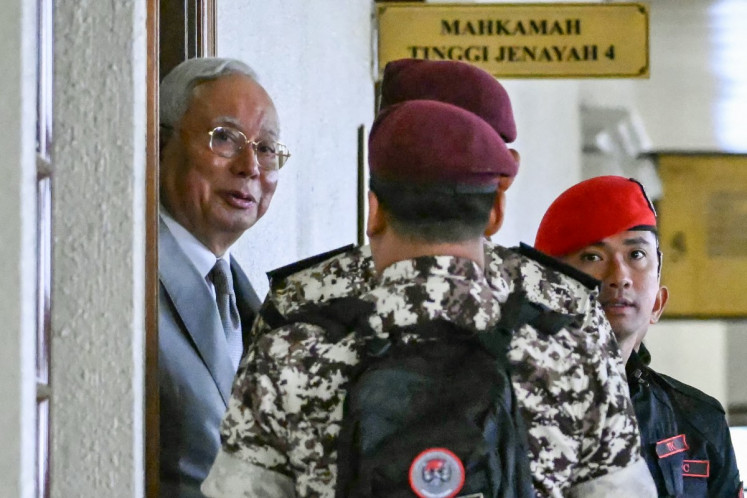Popular Reads
Top Results
Can't find what you're looking for?
View all search resultsPopular Reads
Top Results
Can't find what you're looking for?
View all search resultsSoil compaction puts peatland at risk, agency says
Tropical Peat Research Laboratory staffers walk past burned wild peatland in Miri, Sarawak, Malaysia, on Feb
Change text size
Gift Premium Articles
to Anyone
T
span class="caption">Tropical Peat Research Laboratory staffers walk past burned wild peatland in Miri, Sarawak, Malaysia, on Feb. 22. The NGO claims that it has introduced a soil-compaction method to utilize peatland without spoiling its vital functions.(thejakartapost.com/Anton Hermansyah)
Despite having helped to increase the productivity of oil palm plantations in Malaysia, the soil compaction method commonly used in the country carries risks that may be counterproductive to peatland conservation efforts, an Indonesian peatland agency has said.
In Malaysia, the method is commonly used in oil palm plantations on peatland to maintain humidity in the deeper part of peat as the pores decrease in size, preventing water from evaporating, thereby reducing the risk of fires during the dry season.
"It is a good method, but compaction has other risks. First, more methane gas will be released from the land, and the layers below will slowly oxidize and collapse in the future," Peatland Restoration Agency (BRG) secretary Hartono Prawiratmadja said in Jakarta on Tuesday.
A researcher at the Tropical Peat Research Laboratory, Lulie Melling, said that soil compaction increased Malaysia's peatland-based oil palm productivity to 38 ton per hectare, higher than an average yield of oil palm on Indonesia's peatland at 20 to 22 ton per ha every year.
Hartono said BRG used two approaches in restoring peatland in Indonesia. First, rewetting by pouring water on dry peat to keep it wet. Second, canal blocking by creating a canal with a water gate to maintain humidity in the peat nearby.
"There are two principles in utilizing the peatland. First, keep the main function of the peatland, by planting suitable crops. Second, change the structure and utilize it just like Dr. Lulie is suggesting. We accommodate both views," he said.
Lulie, who pioneered the soil compaction method, claimed that the layer under the peat would not be affected while the layer above would decompose into minerals. "The above structure changes, but not the below structure. We are not disturbing the old buried peat," she said.
Regarding methane gas, Lulie said soil compaction should not directly increase methane gas release. However, her team is gathering data to measure the effect. (ags)(+)










